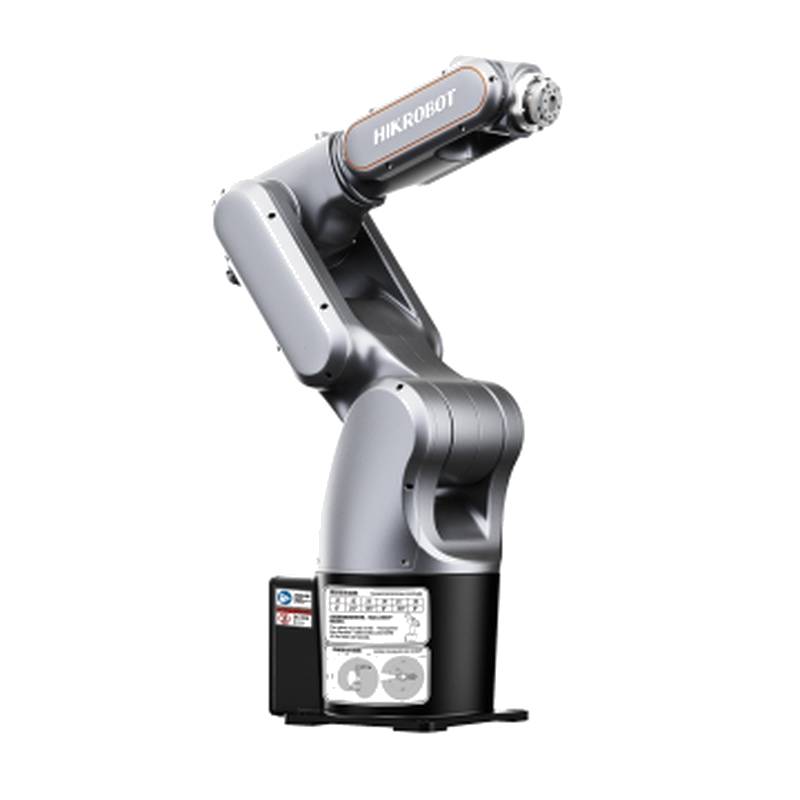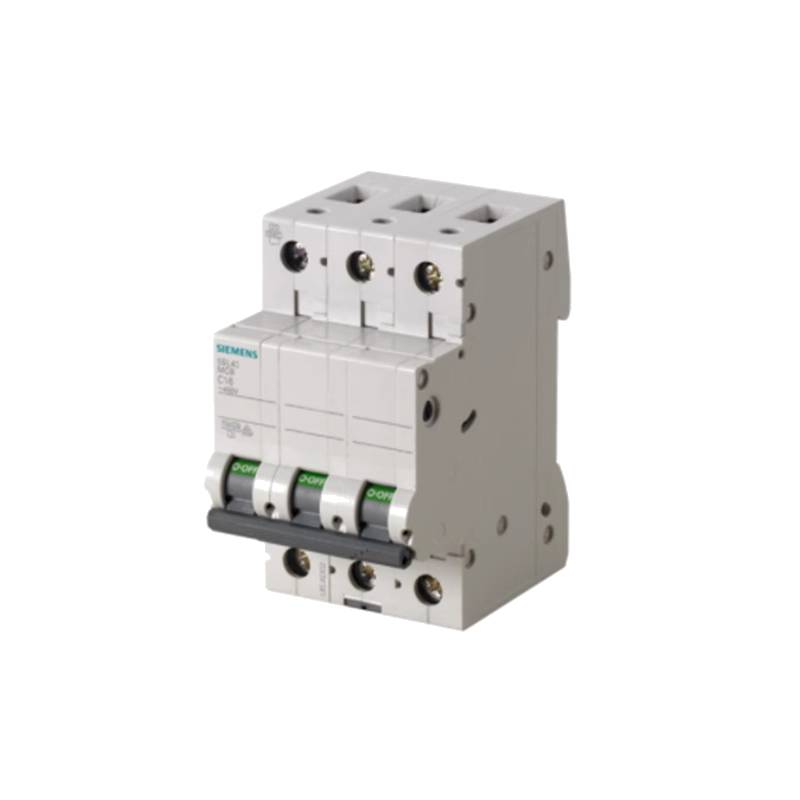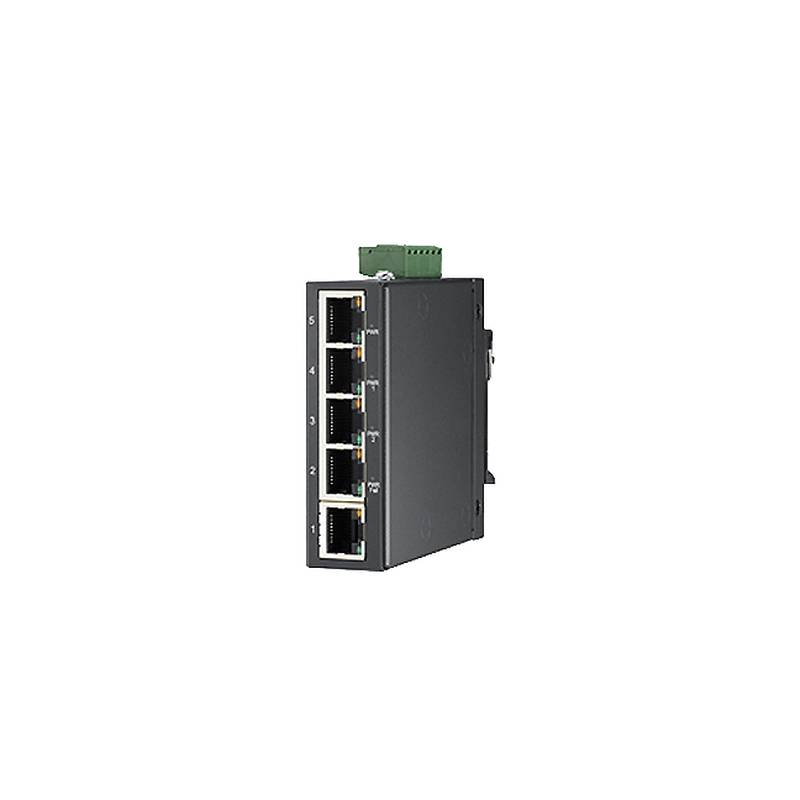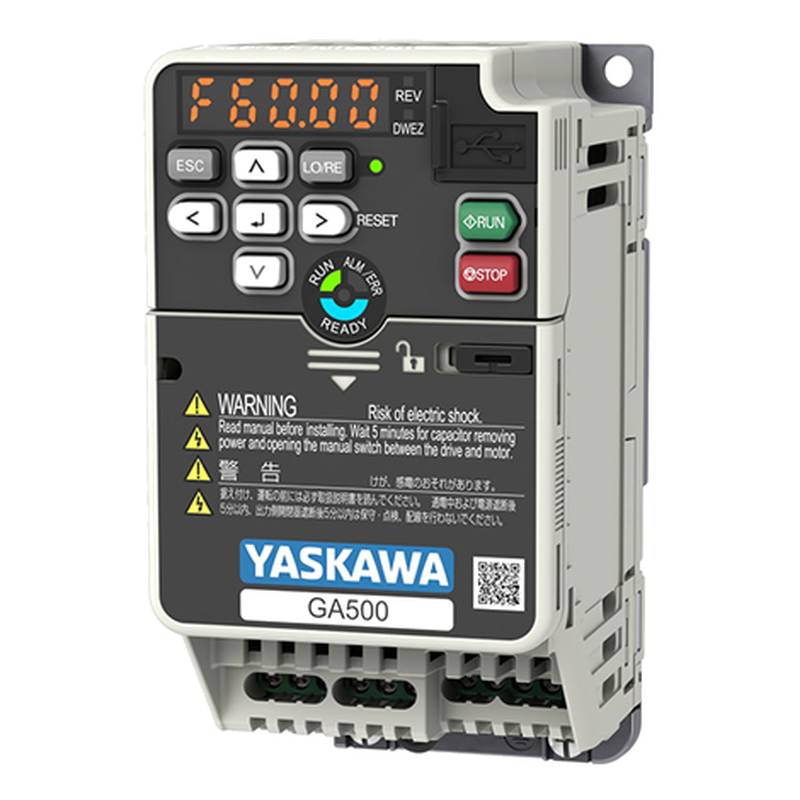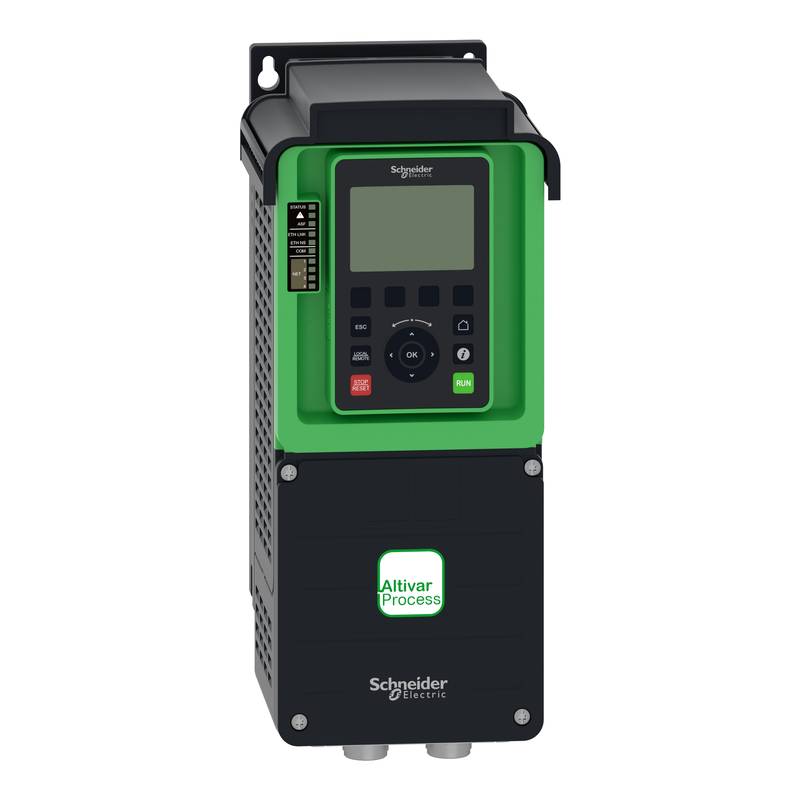
The Siemens 5SU1656-7KK32 Residual Current Circuit Breaker (RCCB) is engineered for superior protection of high-power electronic equipment, offering a rated current of 32A, a residual current sensitivity of 300mA, and a 1-pole + Neutral configuration with a Type C tripping characteristic. This device provides essential safety against earth faults and leakage currents, crucial for preventing damage to sensitive electronics and ensuring personnel safety in demanding industrial environments. Its robust design and advanced tripping mechanisms make it a reliable choice for safeguarding sophisticated electrical installations.
Product Specifications
| Parameter | Value |
| :-------------------------- | :---------------------------------- |
| Product Type | Residual Current Circuit Breaker (RCCB) |
| Siemens Model Number | 5SU1656-7KK32 |
| Rated Current (I n ) | 32 A |
| Rated Residual Current (I n ) | 300 mA |
| Poles | 1P+N (1 Pole + Neutral) |
| Tripping Characteristic | Type C |
| Voltage Rating | 230/400 V AC (typical for this class) |
| Frequency | 50/60 Hz (typical for this class) |
| Breaking Capacity | Varies by specific model variant |
| Installation Type | DIN rail mount |
| IP Protection Rating | Typically IP20 (device itself) |
| Operating Temperature Range | Typically -25°C to +45°C |
Core Features & Market Positioning
The Siemens 5SU1656-7KK32 RCCB distinguishes itself through its specialized Type C tripping characteristic, which is specifically designed to withstand inrush currents associated with inductive loads, common in high-power electronic equipment. This feature significantly reduces nuisance tripping, thereby enhancing operational continuity and reliability for sensitive machinery. As a product from Siemens, a globally recognized leader in industrial automation and electrical engineering, the 5SU1656-7KK32 benefits from a reputation for quality, durability, and advanced safety technology. Its positioning in the market targets applications where standard circuit breakers may be insufficient due to the dynamic current demands of electronic systems, offering a critical layer of protection against earth leakage faults that could otherwise lead to catastrophic equipment failure or fire hazards. The 300mA sensitivity is ideal for supplementary protection and preventing fires, balancing safety with operational efficiency.
Key Application Scenarios
This Siemens RCCB is paramount for protecting high-power electronic equipment across various industrial sectors. It is exceptionally well-suited for applications in manufacturing plants, particularly those utilizing complex machinery with significant inductive components, such as motor drives, control systems, and power supplies for large-scale production lines. In data centers, it provides essential protection for server racks and critical power distribution units, safeguarding sensitive IT infrastructure from electrical faults. Furthermore, its robust design makes it a suitable choice for renewable energy systems, including inverters and power conditioning equipment, where reliable protection against earth faults is a non-negotiable requirement. The 32A rating with a 300mA sensitivity also finds application in commercial buildings for dedicated circuits powering advanced HVAC systems, specialized laboratory equipment, and industrial lighting installations that demand a high level of electrical safety and operational stability.
Practical System Integration Guidance
Integrating the Siemens 5SU1656-7KK32 RCCB into an electrical system is straightforward, leveraging standard DIN rail mounting for secure and efficient installation within distribution boards or enclosures. Proper wiring is crucial; the line (L) and neutral (N) conductors from the protected circuit must be connected to the corresponding input terminals of the RCCB, while the output terminals supply power to the connected load. It is imperative to ensure that the neutral conductor passing through the RCCB is correctly routed and not switched by other devices. For optimal performance and safety, it is recommended to pair the RCCB with an appropriately rated miniature circuit breaker (MCB) of Type C for overcurrent protection. A thorough pre-commissioning check should verify correct wiring, absence of short circuits, and proper earthing of the installation before energizing the circuit. Following installation, a functional test of the RCCB's tripping mechanism using its integrated test button is a mandatory step to confirm its operational readiness.
Operation and Risk Mitigation
The primary function of the Siemens 5SU1656-7KK32 RCCB is to detect residual currents—differences between the current flowing into a circuit and the current flowing out, typically indicating a fault to earth. When the residual current exceeds the 300mA threshold, the RCCB rapidly disconnects the power supply, mitigating the risk of electric shock, equipment damage, and fire. Regular operation should include periodic testing using the built-in test button (usually labeled "T" or "TEST") to verify the internal tripping mechanism. This test should be performed at least monthly, or as per local electrical codes and standards. In the event of nuisance tripping, operators should first investigate the connected equipment for potential earth faults or surges, rather than assuming a fault with the RCCB itself. Overloading is managed by an upstream MCB, so the RCCB's role is specifically leakage current protection. Understanding that the Type C characteristic allows for higher inrush currents than Type B or A is key to preventing unnecessary interruptions while still ensuring safety against hazardous leakage.
Scalability & Long-Term Value
The Siemens 5SU1656-7KK32 RCCB, as part of Siemens' extensive portfolio of electrical protection devices, offers significant long-term value through its inherent reliability and compatibility. While RCCBs themselves are primarily protective devices and not typically part of an "upgrade path" in the traditional sense, their consistent performance over their operational lifespan ensures sustained protection for critical electronic equipment. Their integration into modern industrial facilities is enhanced by their adherence to international standards, ensuring interoperability with other Siemens components and systems, as well as third-party equipment. For facilities looking towards digitalization and the Industrial Internet of Things (IIoT), while this specific RCCB model may not have direct digital communication capabilities, its reliable function provides a stable foundation for sensitive electronic loads within a larger, digitally managed power infrastructure. Its robust construction minimizes the need for frequent replacements, contributing to reduced maintenance costs and operational uptime.
Frequently Asked Questions
What is the primary function of the Siemens 5SU1656-7KK32 RCCB?
The Siemens 5SU1656-7KK32 RCCB is designed to detect earth leakage currents. It protects against electric shock by quickly interrupting power when a fault is detected. This is crucial for sensitive electronic equipment.
This device provides supplementary protection against fire hazards. It ensures personnel safety during operation and maintenance. Its 300mA sensitivity is ideal for these protective measures.
The RCCB safeguards valuable high-power electronic equipment. It prevents damage caused by earth faults. This enhances operational reliability and reduces downtime.
How does the Type C tripping characteristic benefit high-power electronic equipment?
The Type C characteristic provides a higher tripping threshold for inrush currents. This is common with inductive loads found in electronic equipment. It prevents nuisance tripping during normal startup.
This feature ensures that the device only trips when a genuine fault condition occurs. This is vital for continuous operation of sensitive machinery. It improves overall system stability.
By allowing for controlled inrush currents, the Siemens 5SU1656-7KK32 enhances equipment longevity. It reduces unnecessary stress on connected devices during transient events.
What are the installation requirements for the Siemens 5SU1656-7KK32 RCCB?
Installation requires mounting on a standard 35mm DIN rail. Ensure secure fastening for vibration resistance. Proper ventilation around the unit is recommended.
Connect the incoming line and neutral conductors to the designated input terminals. The load is then connected to the output terminals. Correct polarity is essential for proper function.
It is mandatory to perform a test of the tripping function using the integrated test button after installation. Consult the user manual and local electrical codes for detailed instructions.
What is the significance of the 300mA residual current rating?
A 300mA residual current rating is generally considered for fire protection. It is also used for supplementary protection against electric shock. It is higher than personal protection ratings (e.g., 30mA).
This rating balances safety with the operational demands of industrial environments. It is suitable for circuits where earth leakage might occur due to the nature of the equipment. It minimizes unwarranted shutdowns.
For circuits with a higher risk of electric shock to individuals, a lower sensitivity (e.g., 30mA) would be required. The 300mA setting is specific for fire prevention and protection of assets.
Can the Siemens 5SU1656-7KK32 be used for overcurrent protection?
No, an RCCB primarily provides protection against earth leakage currents. It does not offer direct overcurrent protection against short circuits or overloads. Overcurrent protection must be provided by a separate device, typically a Miniature Circuit Breaker (MCB).
The RCCB should be installed downstream of an appropriately sized MCB. The MCB will protect the circuit and the RCCB from excessive current. This combination ensures comprehensive circuit protection.
Ensure the upstream MCB's rating is compatible with the cable size and the load's current requirements, as well as the RCCB's current rating. This dual protection strategy is standard practice.
How often should the test button on the Siemens 5SU1656-7KK32 be operated?
The test button should be operated regularly, typically at least once a month. This is a crucial maintenance step to ensure the RCCB's tripping mechanism is functioning correctly. Always follow local electrical regulations for testing frequency.
Operating the test button simulates an earth fault condition. This verifies that the internal release mechanism and contact switching are operational. It's a simple yet vital check.
Before testing, ensure the circuit is not carrying critical loads, as the test will interrupt power. Consult the product manual for specific testing procedures relevant to this model.
What causes nuisance tripping in an RCCB like the 5SU1656-7KK32?
Nuisance tripping can occur due to high inrush currents from connected equipment. The Type C characteristic of the 5SU1656-7KK32 is designed to mitigate this, but extremely large surges can still cause a trip. Check for sudden, large power draws.
Persistent nuisance tripping might indicate a small, continuous earth leakage fault in the connected equipment or wiring. This requires thorough investigation of the protected circuit. It's a sign of a developing issue.
Environmental factors like moisture or dust ingress into connected equipment can also lead to leakage currents and tripping. Ensure equipment is installed in suitable conditions and maintained properly.
What is the compatibility of this RCCB with other Siemens electrical components?
The Siemens 5SU1656-7KK32 is designed to be highly compatible with other Siemens components within their low-voltage distribution systems. This ensures seamless integration into larger electrical assemblies. Look for consistent design and connection standards.
It adheres to international standards, making it compatible with many third-party circuit protection devices and enclosures. However, for optimal system performance and warranty considerations, using components from the same manufacturer is often recommended.
For building a complete panel or system, Siemens offers a range of complementary products like MCBs, surge protective devices, and distribution boards that are designed to work harmoniously with this RCCB.
Does the Siemens 5SU1656-7KK32 support digital communication or smart grid integration?
This specific model, the 5SU1656-7KK32, is a conventional RCCB and does not inherently feature digital communication capabilities or direct smart grid integration. It operates based on electromechanical principles. Its function is purely safety-oriented.
For advanced monitoring, remote control, or integration into IIoT platforms, Siemens offers intelligent devices or communication modules that can be paired with or integrated into their electrical distribution systems. These advanced solutions provide data logging and network connectivity.
While this RCCB provides fundamental safety, any smart functionalities would need to be implemented through separate intelligent devices or a higher-level Building Management System (BMS) or SCADA system.
What is the expected lifespan and maintenance for the Siemens 5SU1656-7KK32?
The Siemens 5SU1656-7KK32 is built for durability and a long operational lifespan, typical of industrial-grade Siemens products. Expected lifespan is generally measured in years, often exceeding 10-15 years under normal operating conditions. Regular testing is the primary maintenance.
Beyond the monthly functional test of the tripping mechanism, physical maintenance is minimal. Keep the device clean and ensure it is installed in an environment free from excessive dust or corrosive substances. Periodic visual inspections for any signs of damage are advisable.
The device is designed to be maintenance-free in terms of internal components. If a fault or failure is suspected, the unit should be safely de-energized and replaced by a qualified electrician, rather than attempting internal repairs.
















